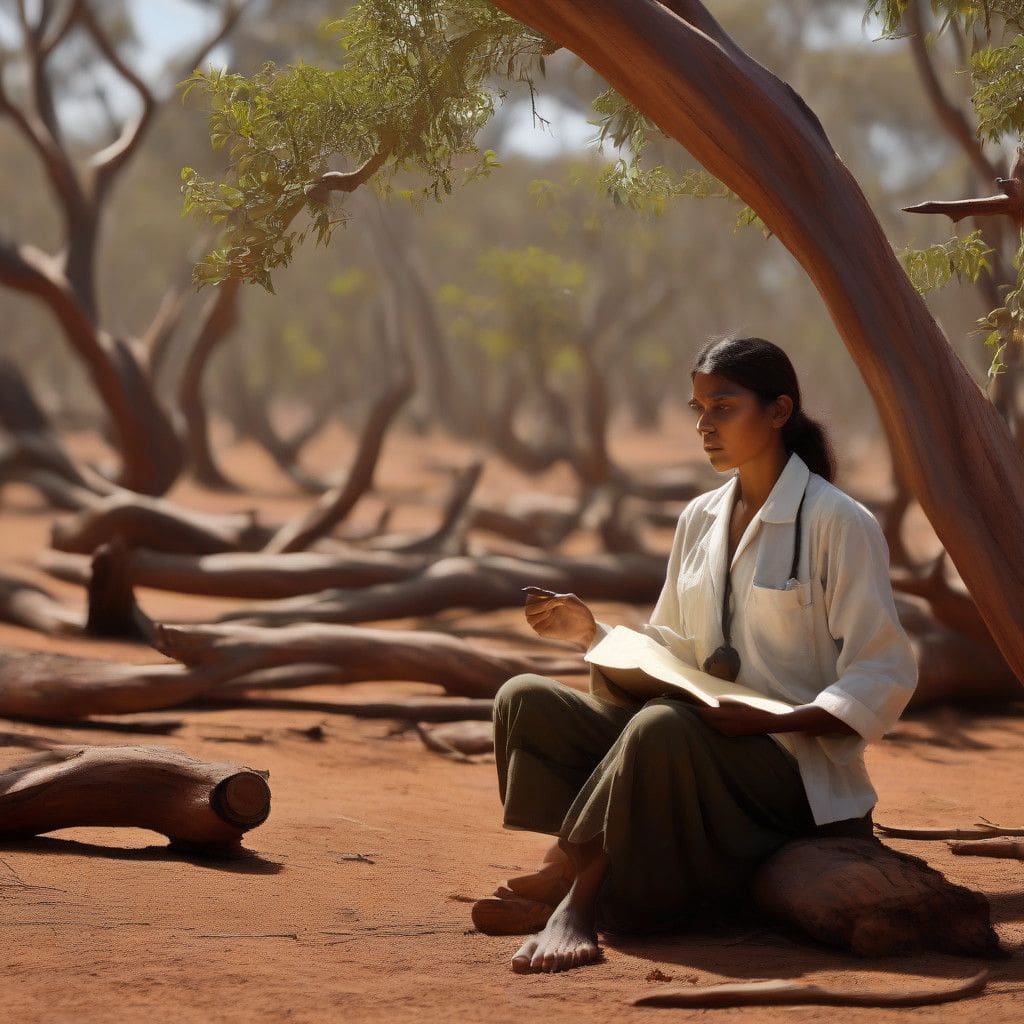In recent years, Australian sandalwood has gained remarkable popularity, revered for its deep, warm aroma. The wood and its oil have become staples in the luxury fragrance industry, appealing to consumers and celebrities. However, this increasing demand has raised serious concerns among conservation experts regarding the sustainability of sandalwood, with warnings that the species is nearing extinction in its natural habitat.
According to Richard McLellan, an adjunct research fellow at Charles Sturt University, the allure of Australian sandalwood lies in its status as one of the most fragrant sandalwood species worldwide. Unfortunately, this popularity has been detrimental; “very few people know that it’s declining in the wild and it’s been over-harvested for decades,” he explained. McLellan’s six years of research into the wild Santalum spicatum, primarily harvested in Western Australia, reveals that this species is critically threatened, largely due to its extensive use in perfumes, cosmetics, and incense.
One noteworthy stakeholder in the sandalwood industry is the Aboriginal-owned business Dutjahn Sandalwood Oils, which supplies sandalwood oil to notable brands such as Aesop and Givaudan, a major supplier for the Estée Lauder group. Guy Vincent, chief executive of Dutjahn Sandalwood Oils, insists that the wild sandalwood population is not endangered because it is sustainably sourced from plantations, government-owned areas, and native title lands. Vincent highlighted that the regeneration process of the trees on native lands is “monitored and validated scientifically,” indicating a potential model for sustainable harvesting practices.
However, the broader reality is troubling. In Western Australia, the Forest Products Commission oversees the commercial harvesting of up to 2,500 tonnes of wild sandalwood annually. While some sandalwood is also cultivated in plantations, experts are increasingly concerned about wild populations, noting severe deficits in natural regeneration. Historically, Santalum spicatum flourished across much of southern Western Australia and South Australia but has seen significant geographic retreat to semi-arid regions, particularly in Western Australia, where it lacks formal protection.
The plight of Australian sandalwood has prompted McLellan to advocate for its listing under national environmental laws. His research emphasizes its ecological significance as a keystone species for native fauna. “We extract it purely for commercial gain without recognizing its ecological value in the landscape,” he said. The federal government is set to receive recommendations regarding the protection status of Australian sandalwood from its threatened species scientific committee by October 30, 2024, a decision awaited with considerable anticipation.
The International Union for Conservation of Nature (IUCN) listed wild Australian sandalwood as “vulnerable” three years ago, noting that “unsustainable, legal wild harvest” poses a considerable threat to its survival. This classification serves as a stark reminder that commercial interests often collide with environmental sustainability. Professor Kingsley Dixon from Curtin University observes a marked decline in both the abundance and quality of sandalwood in its original range, with many populations disappearing from areas where they were once commonplace.
Concerningly, the Department of Biodiversity, Conservation, and Attractions in Western Australia has already recognized the instability of some wild populations among their biodiversity management programs. With a review planned that aligns with any changes in sandalwood’s protection status, the department acknowledges that natural regeneration poses a challenge to the long-term viability of these communities. As a response, re-seeding efforts and regeneration programs have emerged as crucial for conservation efforts aimed at restoring sandalwood ecosystems.
Peter Robertson, an environmental consultant and leader of the “Save our Sandalwood” initiative, asserted that the situation for Santalum spicatum is dire. He attributes the escalating risks not only to overharvesting but also to climate change and grazing by invasive feral animals. “We think that the minister must accept that advice and ensure that Santalum spicatum is listed as a threatened species,” he urged.
In conclusion, the situation surrounding Australian sandalwood highlights the urgent need for sustainable harvesting practices and effective conservation strategies. This is a prime example of how a desirable product can lead to ecological harm, further emphasizing the necessity for all stakeholders—ranging from businesses to government entities—to engage collaboratively toward fostering sustainability. As industry and environmental concerns intersect, the path forward must prioritize both economic viability and ecological integrity.












